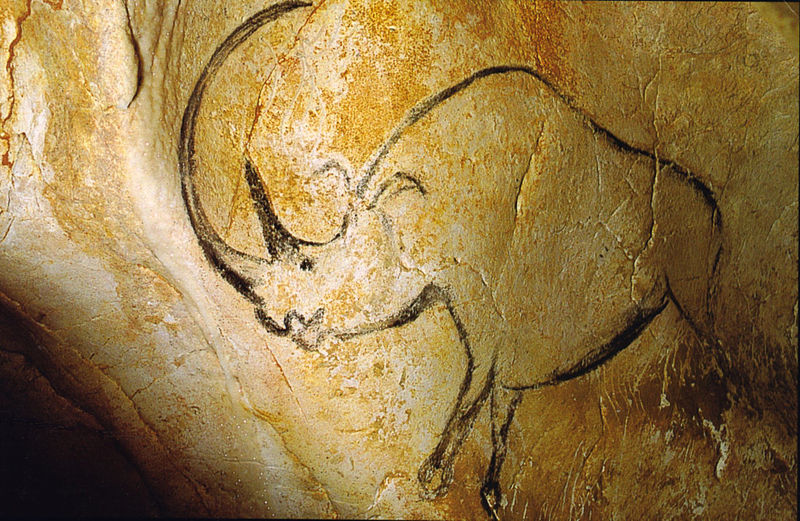For the first time ever, researchers have uncovered the mummified remains of a woolly rhinoceros with a big old hump on the back of its neck. Curiously absent in all other known specimens of the Ice Age megafauna, this fatty bulge attests to the remarkable accuracy of ancient cave paintings depicting rhinos with hunched backs.
More than 35,000 years ago, prehistoric artists decorated the walls of the Chauvet Cave in France with stunningly precise illustrations of animals, although their portrayals of woolly rhinos had until now been viewed with some suspicion. Contrary to these ancient sketches, mummified rhinos have always been found to lack a hump, raising questions as to why Ice Age painters chose to represent the species with this anatomical feature.
Solving the riddle, the authors of a new study report the discovery of a young woolly rhinoceros mummy from the permafrost of Yakutia, Siberia. Thought to have been around four years old at the time of death, the prehistoric beast is described as a subadult and is in possession of a very clear hump on its neck and withers area.

A prehistoric artwork depicting a woolly rhino at Chauvet Cave.
Having become extinct around 10,000 years ago, the woolly rhinoceros is a very distant relative of the white rhino, which is the only existing rhinoceros species that possesses a hump. However, while the white rhino’s bump consists mainly of muscle and ligament, the woolly rhinoceros was the proud owner of a fat-filled hump.
The study authors therefore conclude that the presence of a hump in these two species represents an example of homoplasy, which means that while their bulges may appear similar, they do not share a common ancestral origin.
“This study confirms the accuracy of numerous cave paintings by Paleolithic artists of a woolly rhinoceros with a hump in the neck and withers area,” write the researchers. “The most accurate illustrations […] were made by a Paleolithic artist from Chauvet Cave,” they continue.
Based on their histological analysis, the authors conclude that the ancient hump was probably filled with white fat cells, which are the type that store energy in the form of lipids and cause us to gain weight when we have too many of them. At present, it’s unclear if the hump was only possessed by young woolly rhinos or if it remained on the creatures’ necks throughout their lives.
The researchers therefore propose two possible explanations for the presence of the hump, one of which posits that it helped juvenile individuals keep warm until they were large enough to hold enough body heat. In the second scenario, the woolly rhinos retain their humps into adulthood, with the fat stash playing “an important role in thermoregulation and nutrient storage throughout their lifespan.”
Based on portrayals of humped adult rhinos at Chauvet Cave, the study authors suspect that the anatomical feature may indeed have been for life. However, many questions remain unanswered, such as whether the hump fluctuated in size with the seasons.
Despite these lingering uncertainties, the researchers say that as a result of their discovery, “it has been established that the largest representatives of the Mammoth fauna, the woolly mammoth and woolly rhinoceros, had a distinguishing feature from their extant relatives – a fat hump.”
The study is published in the journal Quaternary Science Reviews.
Source Link: Woolly Rhinos Had A Hump On Their Back, Frozen Mummy Reveals